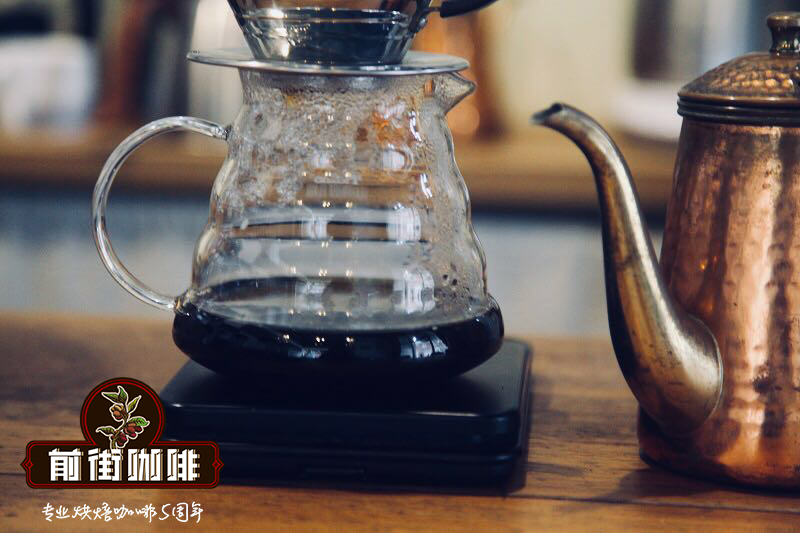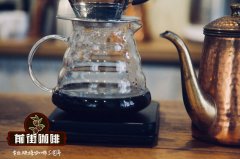The origin of coffee beans and the basic characteristics of yellow bourbon coffee beans such as lemon

Professional coffee knowledge exchange more coffee bean information please follow the coffee workshop (Wechat official account cafe_style)
Introduction of Qianjie-Huang bourbon Coffee varieties
The Origin of Yellow bourbon in Brazil
As a coffee variety, Huang bourbon has been grown on this land for nearly 90 years.
By the 1850s, Brazil had become the world's leading coffee producer. But coffee farmers at that time relied heavily on the tin card varieties introduced in the 1720s. Due to the limited production of iron pickups, this has led to a reduction in exports. A Brazilian emissary went to the Indian Ocean island of Reunion, east of Madagascar, to obtain the seeds of the red bourbon variety. By the 1870s, Red bourbon had become a common and famous coffee variety in many cafes in Brazil.
But in 1871, something strange happened. According to many records, a variety of iron pickup appeared in the city of Botucatu in the state of Sao Paulo, whose fruit is yellow, which has never been seen in Brazil. Although the yield of this yellow variant (then known as yellow Botucatu) was not particularly high, it was adopted by many farmers because of the strange color of its fruit. It is worth noting that some researchers believe that yellow bourbon originated from a variation of natural red bourbon.
It is said that the first yellow bourbon first appeared in 1930 on a red bourbon farm near the city of Pederneiras (SP)-which is believed by many to be the result of natural reproduction between red bourbon and yellow Botucatu. Except for the yellow berries, this plant is very similar to red bourbon and has been shown to have the same or even higher yields.
This phenomenon attracted the attention of researchers at the Campinas Institute of Agronomy (IAC), including Carlos Arnaldo Krueger (Carlos Arnaldo Krug), who first conducted a formal study of yellow bourbon in 1942. Over the next three years, in a research field of Jau (SP), IAC planted and studied 30 pedigrees of the variety.
Throughout the 1950s, the most promising yellow bourbon varieties were given the code "IAC J" and sold to farmers. In 1951, J.E.T of the same institute. Professor Mendes studied the yields of the varieties planted at the time: iron pickup, yellow Botucatu, Sumatra, red bourbon, yellow bourbon and Marago Rippi, and the results showed that yellow bourbon had the highest yield.
But even so, Huang Bourbon never dominated the Brazilian coffee market in the decades that followed. Although it is planted commercially, it is not widely used. And because of its obvious yellow, it is often regarded as a novel plant.
Yellow bourbon can grow to 2.8 meters and mature quickly. Of the 30 varieties studied in 1945, 7 were grown commercially in today's Brazil.
Because of its low and medium yield and relative sensitivity to coffee leaf rust, the cultivation of yellow bourbon may require more attention than other varieties. Huang bourbon usually shows the potential of high quality where harvesting and post-harvest processing are well performed at an altitude of more than 1000 meters.
The flavor characteristics of yellow bourbon are very obvious in the cup test, including its sweetness, rich aroma and very obvious citric acid flavor. Ripe fruits and raisins are other common flavors. Recently, researchers have found that the content of sucrose and the presence of some fatty acids and organic acids are closely related to the quality of yellow bourbon. So far, however, no significant link has been found between luteolin (the source of yellow fruit) and coffee varieties.
In short: Qianjie is a coffee research hall, happy to share the knowledge about coffee with you, we share unreservedly just to make more friends fall in love with coffee, and there will be three low-discount coffee activities every month. The reason is that Qianjie wants to make more friends drink the best coffee at the lowest price, which has been Qianjie's tenet for 6 years!
END
Important Notice :
前街咖啡 FrontStreet Coffee has moved to new addredd:
FrontStreet Coffee Address: 315,Donghua East Road,GuangZhou
Tel:020 38364473
- Prev

The type and origin of coffee beans typica coffee is actually one of the oldest varieties.
Professional coffee knowledge exchange more coffee bean information please follow the coffee workshop (Wechat official account cafe_style) front street-iron pickup coffee varieties introduction iron pickup and bourbon these two ancient varieties, in the new world different soil and water, breeding for three hundred years, creating thousands of varieties and hybrids. Intraspecific hybrid: two Arabica varieties, a new interspecific hybrid: a
- Next

Coffee origin and flavor characteristics Introduction Pink bourbon Origin Introduction Pink girl in the coffee world
Professional coffee knowledge exchange More coffee bean information, please pay attention to coffee workshop (Weixin Official Accounts cafe_style) Front Street-Pink Bourbon Coffee Variety Introduction Bourbon Coffee Bourbon kind Before introducing pink bourbon coffee, briefly talk about what bourbon coffee is. Bourbon coffee was originally grown on the island of Reunion, which was also known as le Bourbon until 1789. Bourbon species,
Related
- Beginners will see the "Coffee pull flower" guide!
- What is the difference between ice blog purified milk and ordinary milk coffee?
- Why is the Philippines the largest producer of crops in Liberia?
- For coffee extraction, should the fine powder be retained?
- How does extracted espresso fill pressed powder? How much strength does it take to press the powder?
- How to make jasmine cold extract coffee? Is the jasmine + latte good?
- Will this little toy really make the coffee taste better? How does Lily Drip affect coffee extraction?
- Will the action of slapping the filter cup also affect coffee extraction?
- What's the difference between powder-to-water ratio and powder-to-liquid ratio?
- What is the Ethiopian local species? What does it have to do with Heirloom native species?

